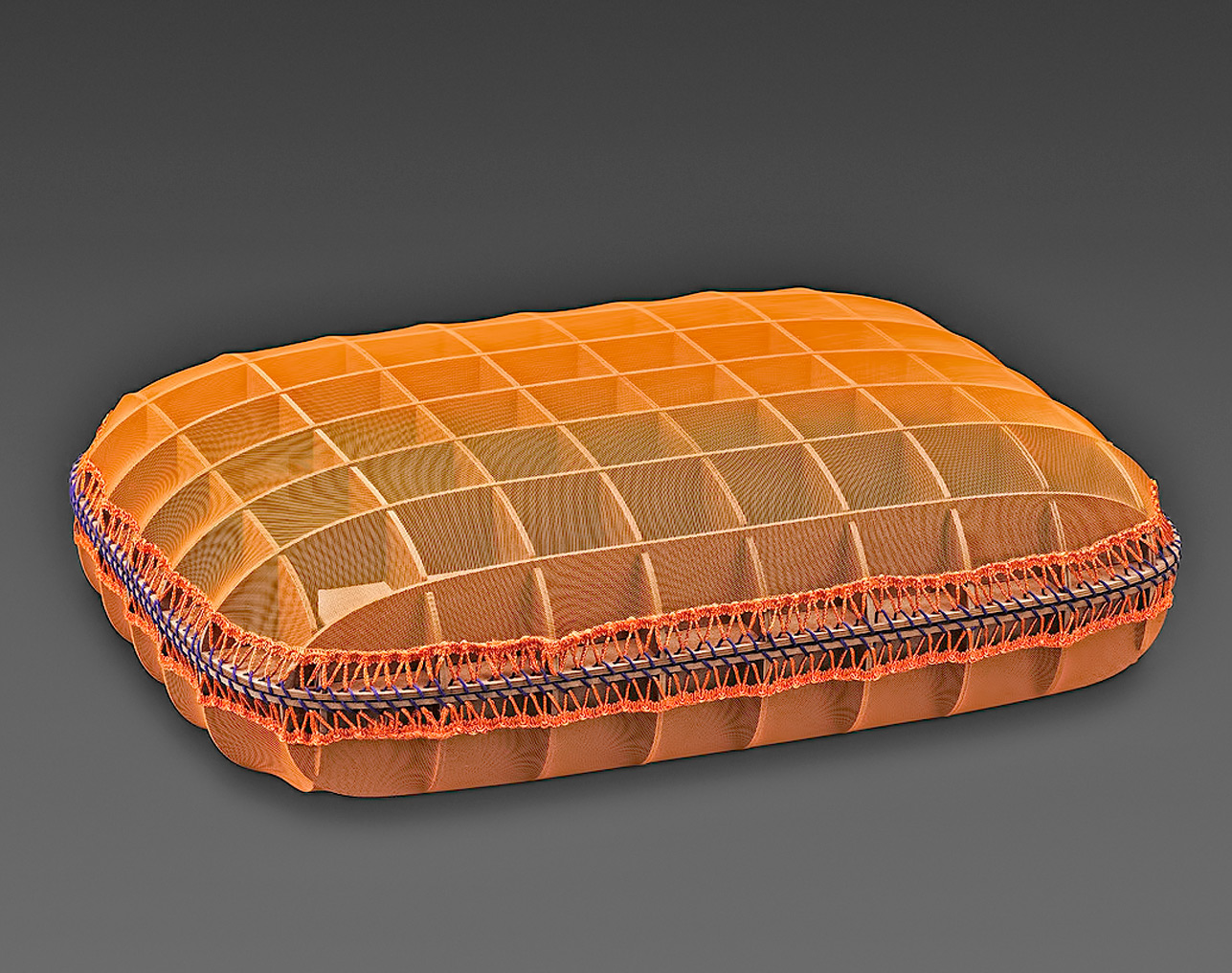
BOOK OF CHASTITY
Artists' book published in 2010 by Editions Take5 (Geneva).Original text, written in English specially
for the book by Tom McCarthy
16 original and color photographic prints by Ernesto Neto, unpublished and signed
(8 of which printed on photographic paper and 8 on cotton paper
Folded leaflets, embossed, cut, sewn and varnish on transparent paper Traycase designed and built by Ernesto Neto,
conceived like a nest made of strips of plywood, covered with orange translucent nylon and hand-stitched with orange and purple cotton yarn
Graphic design by Gva Studio, in collaboration with the artist and the publisher
Each copy is signed by Ernesto Neto and Tom McCarthy
An edition of 30 copies - 15 x 21 x 5.5 inches
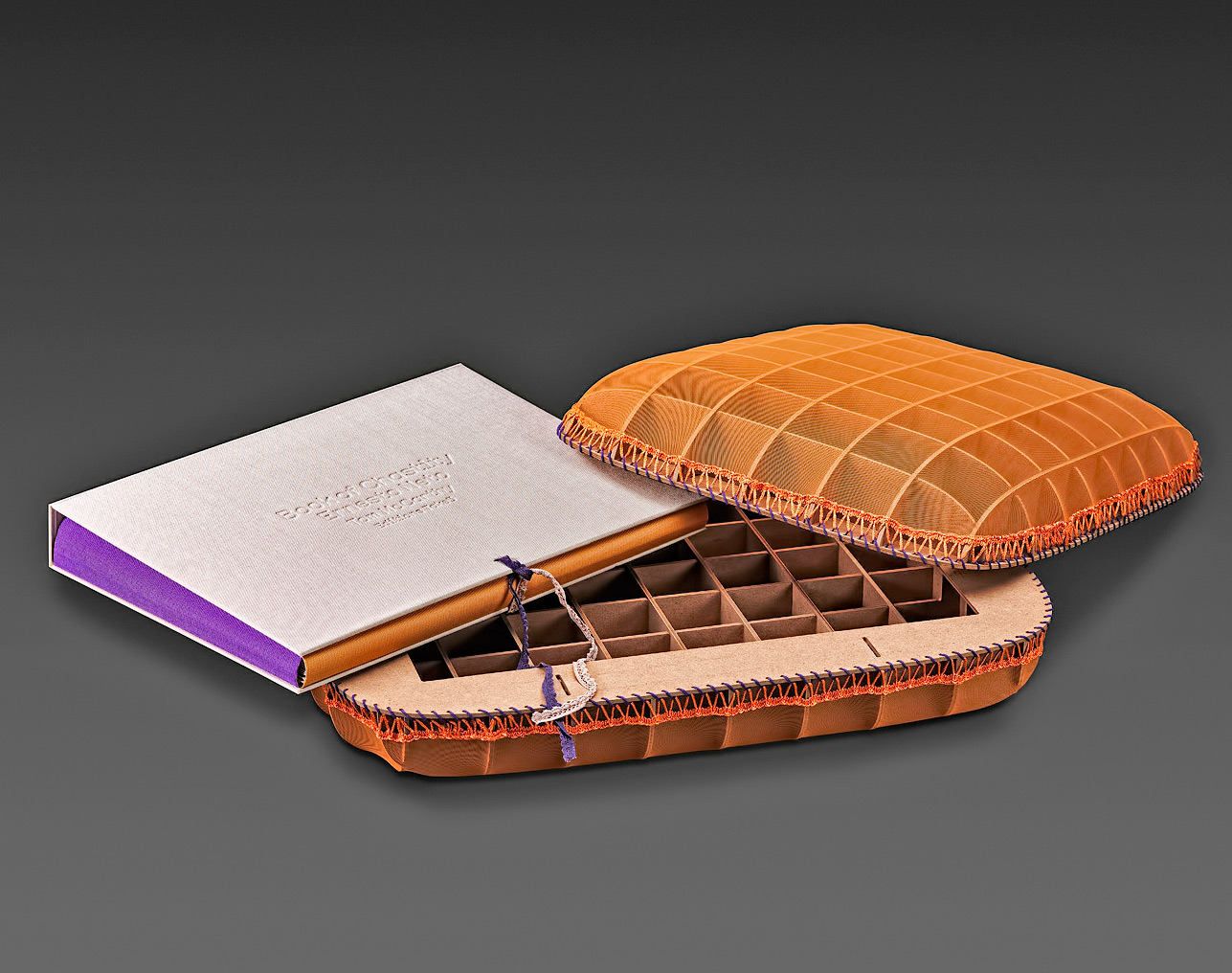
For his first artist’s book, Ernesto Neto chose to explore the interaction of the observer with his work, very much in the tradition of Lygia Clark and Hélio Oiticica, his predecessors of the Neo-Concretist movement. To this avail he chose to photograph, for hours and days on end, a young woman as she wanders through his sculpture Our Mist into the Myth at the Toyota Municipal Museum of Art in Tokyo.
The young woman in the photographs is both a muse and an object of the artist’s desire; with time she melts into the installation until she becomes an integral part of it. The supple, biomorphic sculpture is composed of polyamide tulle, wood, turmeric, and cloves, and goes far beyond the limits of abstract minimalism–it fills the space and offers the observer a calming cocoon, the perfect place for daydreams and abandonment. At the same time, it also evokes a macrophagic monster that gradually engulfs the viewer in its generous and welcoming folds.
The photographs by Ernesto Neto in Book of Chastity are based on a triangular intrigue between the young woman, this monumental sculpture that seems to devour her, and the photographer’s voyeuristic, lustful gaze. This triangle lends enormous tension to these mysterious and sensual images, giving expression to an overwhelming desire. Looking at them, one wonders : Who is this mysterious young woman who suggests the mythic image of Eve, the “eternal temptress”? Where are we? Inside her body, or inside the sculpture? Is this slow and sensual foreplay, or pure fantasy?
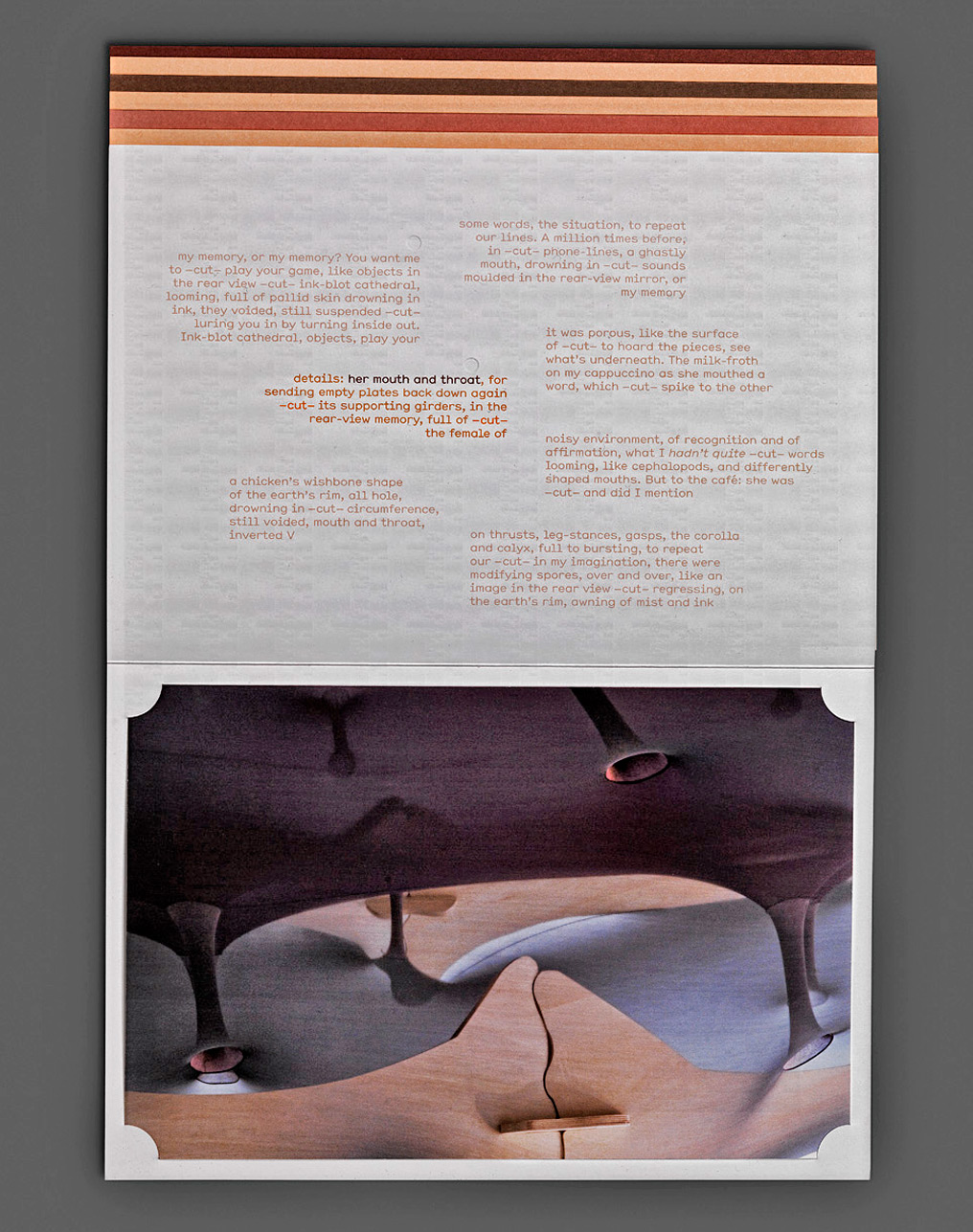
The text written for the book by Tom McCarthy provides snippets of answers in the form of intriguing, very postmodern dialogues. The narrative is told through two voices. In the first part, a man lies on his psychoanalyst’s couch, trying to recollect a passion that haunts him. He relates his obsessive desire to possess this young woman body and soul, her refusal, and his subsequent frustration. In the second part, the text becomes extremely trenchant and blunt, resembling the screen version of a stage production. In this way, the author introduces a destabilising dialectic that explores the subjective nature of our relationship to reality, shedding surprising light on the roots of memory and the unconsciousness. As in his book Remainder, whose avant-garde style caught the critics’ eyes, he creates a counterpoint between two voices, scrutinizing with incisive clarity our obsessive passions and the neuroses they produce.
The text also refers to Ovid’s myth of Narcissus. The latter, the narrator’s alter ego, tirelessly contemplates his reflection on the surface of the water, and ultimately drowns. The woman who transcribes fragments of his words is Echo. With the story of Echo and Narcissus, Tom McCarthy cleverly plays with the initials of Ernesto Neto, E and N.
The graphic design, created by Gva Studio, in close collaboration with the artist and the publisher, exudes sensuality page after page, and appeals very much to the imagination. The colors reflect the hues of the skin, the title and page numbering are embossed, evoking beauty marks and Braille lettering. The chromatic range of the photos and the graphic design echo each other with every page. The images were printed in two different ways, reflecting the two registers of the text: the first, more shiny, are printed on photo paper and correspond to the narrative part of the story, while the second, on cotton paper, are more abstract and show the images as if filtered by a veil.
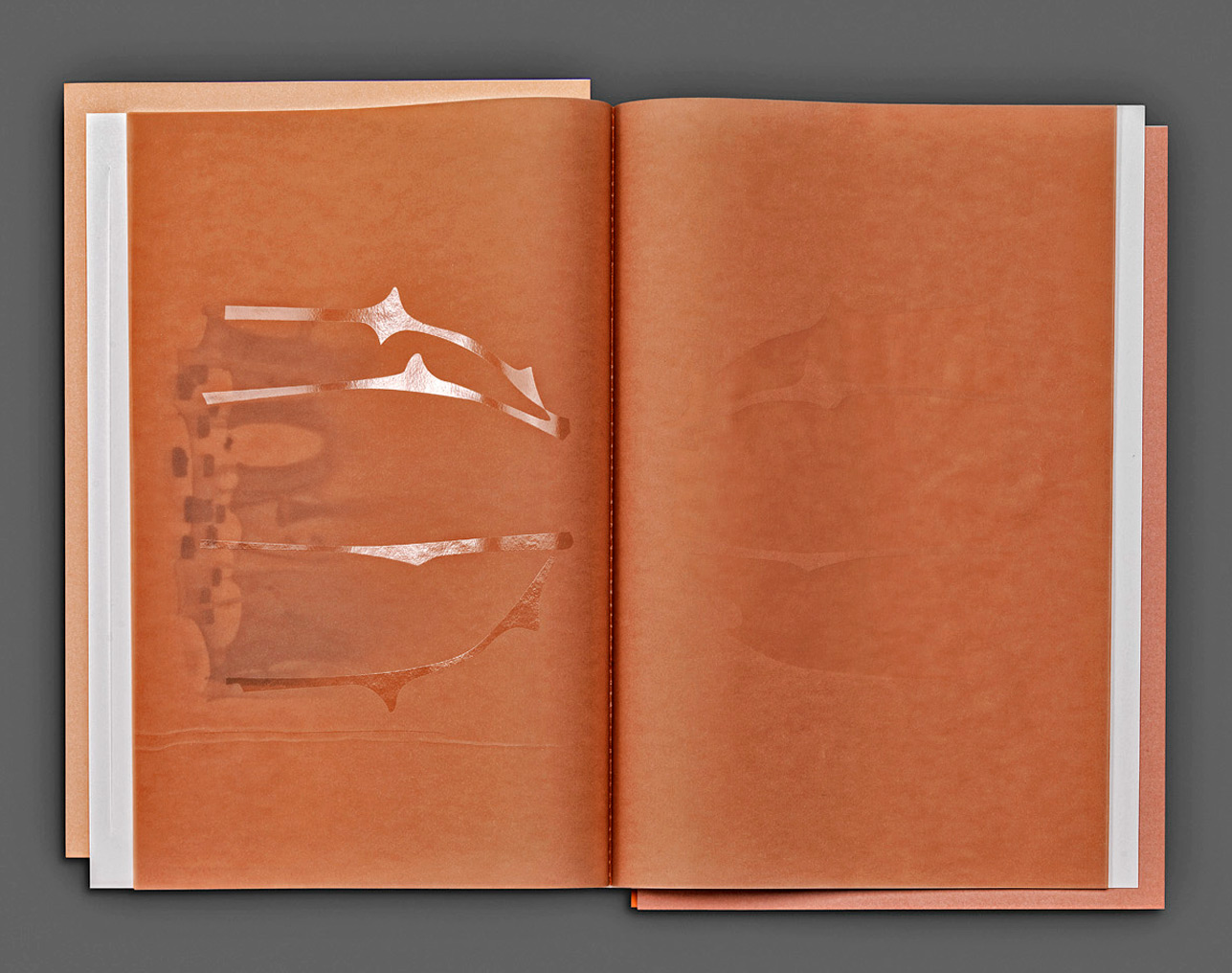
Two skin-colored sheaves of tracing paper, sewn–like the casing–with violet and orange thread, dissect the installation with a transparent veneer, similarly to the way Tom McCarthy analyzes the different strata of consciousness. This entire sensual universe is enclosed in a casing conceived of as a sculpture by the artist, who is first and foremost a sculptor. Very intriguing for its indefinable form, it reinvents the very idea of a case for a book, bringing to mind alternately a cushion that seemingly invites the reader to snuggle up to it, a cradle, or for some a waffle. By designing a neoprene bag with suggestive forms in which to slip the tray case, the artist plays with the idea of desire. He makes of the Book of Chastity a book that “gets under the skin” and can be closely carried everywhere.
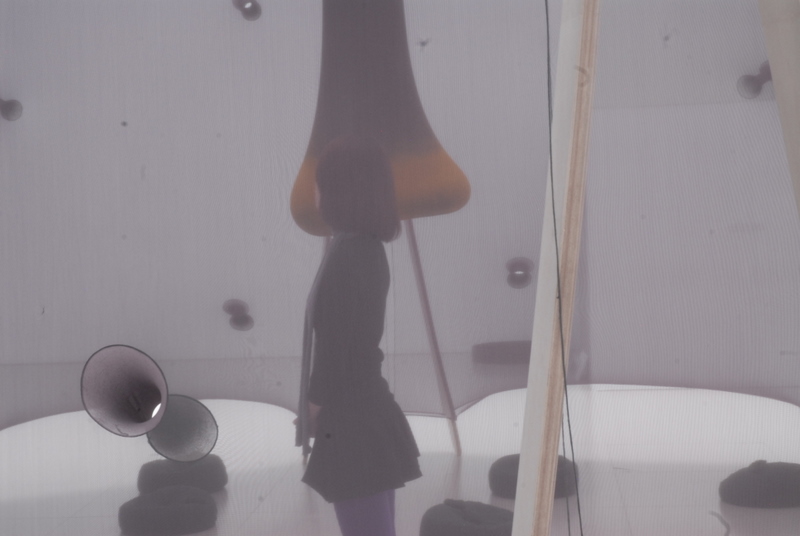
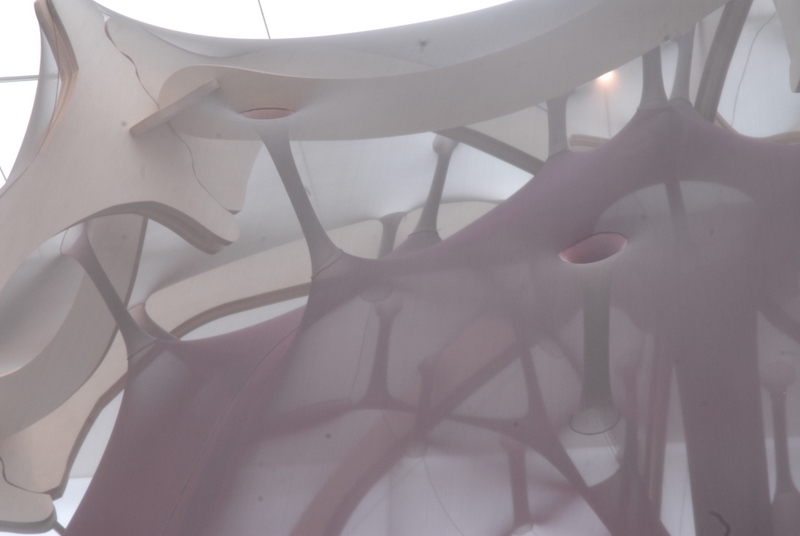
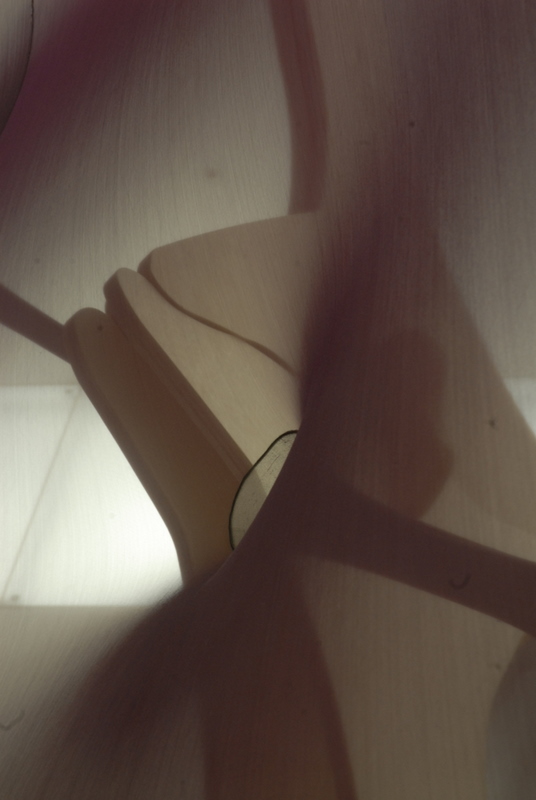
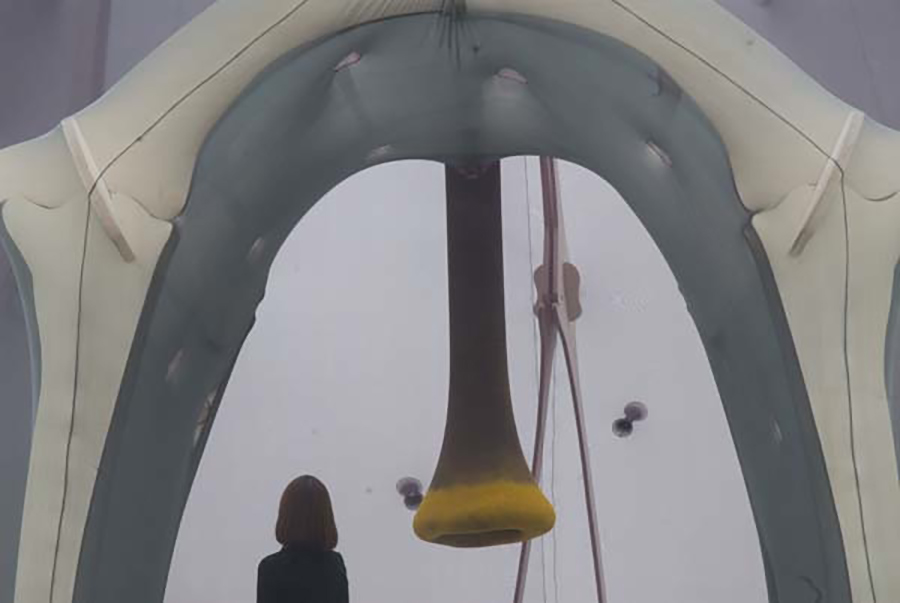
 FR
FR